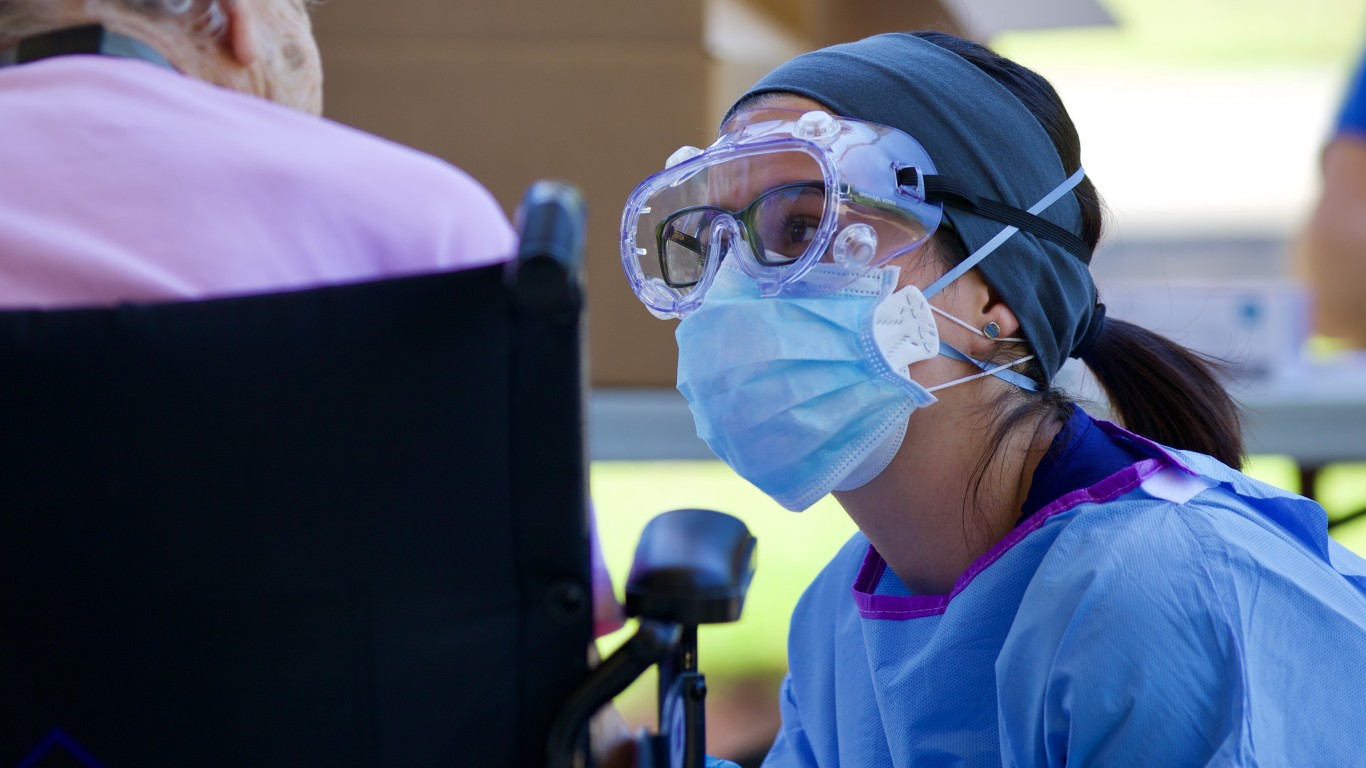Health and Healthcare
COVID-19: States Where the Most People Have Been Infected by New Variant

Published:

As the rise in COVID-19 infections in the United States slows each day, two concerns about the spread of the disease remain. One is that new variants may spread faster than the primary one and could be more deadly. The other concern is the rate at which Americans have been and will continue to be vaccinated. Currently, there are 27,319,269 confirmed COVID-19 cases and 468,679 fatal cases in the United States. Fatalities continue to rise at a pace fast enough that officials fear there will be 600,000 deaths by summer.
The B.1.1.7 variant was first discovered in the United Kingdom about two months ago. According to The Los Angeles Times, it is believed to be 50% more transmissible than the conventional variety. The spread already has forced public officials to take action. Pew reports, “More contagious variants add to the struggle agencies already face to trace contacts, manage health care across jurisdictions, communicate with the public and vaccinate residents.” In short, these variants could cause yet another surge in the disease across America.
The Centers for Disease Control and Prevention (CDC) has begun to track these variants. The one most prevalent so far is B.1.1.7. It was found in 33 states as of February 8. In total, as of that time, there were 690 cases. In the report that accompanied the data, the agency said about the variant cases:
The emerging variants CDC is closely monitoring have mutations in the virus genome that alter the characteristics and cause the virus to act differently in ways that are significant to public health (e.g., causes more severe disease, spreads more easily between humans, requires different treatments, changes the effectiveness of current vaccines).
The CDC analysis showed that the new B.1.1.7 variant was concentrated in a small number of states. First among these was Florida with 201 cases. California had 150 cases and New York had 59. That means the three states had nearly 60% of the B.1.1.7 variant cases. The New York Times reports that the spread of the variant is doubling every 10 days. At that rate, it could become the most prevalent variant in the United States by March.
The final issue with the B.1.1.7 variant, and perhaps others, is that it is unclear that current vaccines are completely effective against it. That means a new spread could happen quickly and could be harder to treat.
Click here to see the worst hotspot in America.
Click here to see the state with the highest number of cases.
Credit card companies are at war. The biggest issuers are handing out free rewards and benefits to win the best customers.
It’s possible to find cards paying unlimited 1.5%, 2%, and even more today. That’s free money for qualified borrowers, and the type of thing that would be crazy to pass up. Those rewards can add up to thousands of dollars every year in free money, and include other benefits as well.
We’ve assembled some of the best credit cards for users today. Don’t miss these offers because they won’t be this good forever.
Flywheel Publishing has partnered with CardRatings for our coverage of credit card products. Flywheel Publishing and CardRatings may receive a commission from card issuers.
Thank you for reading! Have some feedback for us?
Contact the 24/7 Wall St. editorial team.